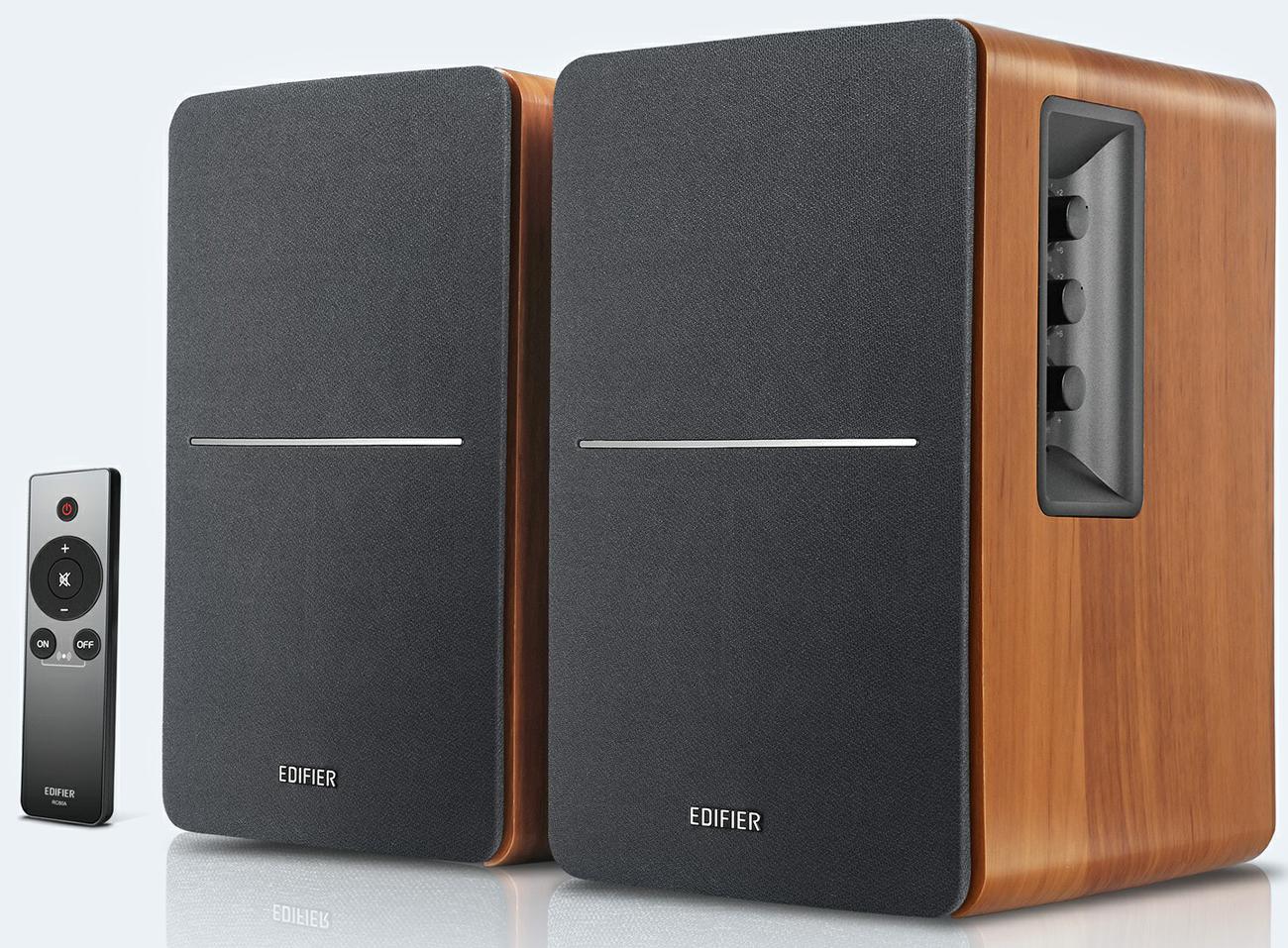
When it comes to filling a room with quality sound, bookshelf speakers remain one of the most popular and versatile choices. Today, we're comparing two distinct approaches to this speaker category: the plug-and-play Edifier R1280T ($129.99) and the audiophile-focused KEF Q150 ($332.49).
Before diving into the specifics, let's understand what makes bookshelf speakers special. These compact units are designed to deliver high-quality sound from a relatively small footprint, typically placed on stands, shelves, or desks. They serve as the sweet spot between larger floor-standing speakers and smaller desktop speakers, offering a balance of performance and practicality.
The KEF Q150 speakers, released in 2017, represent the eighth generation of KEF's renowned Q Series. They showcase KEF's signature Uni-Q driver technology, where the tweeter (handles high frequencies) sits in the center of the midrange driver (handles middle frequencies). This design, refined over decades, helps create a more coherent and natural sound.
The Edifier R1280T, introduced around 2020, takes a different approach. It combines modern active speaker technology (meaning built-in amplification) with a classic wooden design that many find appealing. The built-in amplifier eliminates the need for external equipment, making it a simpler solution.
The R1280T represents the modern trend of integrated audio solutions. Everything you need is built right in:
This design makes it perfect for:
The Q150 takes the traditional audiophile approach:
This makes them ideal for:
The KEF Q150 delivers noticeably superior sound quality, primarily due to its Uni-Q driver technology. This creates what audio enthusiasts call a "coherent soundstage" – meaning instruments and vocals appear to come from specific, stable locations in space. The bass extends lower (down to 51Hz) and the highs reach higher (up to 28kHz) than the Edifier.
The R1280T offers good sound quality for its price point, with a warm, pleasant signature that works well for casual listening. Its frequency response (75Hz to 18kHz) is more limited, but still covers most musical content effectively. The built-in amplification is well-matched to the speakers, ensuring consistent performance.
For home theater use, the choice becomes more clear-cut. The Q150 integrates perfectly into a larger system:
The R1280T, while usable for TV sound, isn't ideal for home theater:
The Edifier R1280T at $129.99 represents the total system cost. However, the KEF Q150 at $332.49 requires additional investment:
This is where the KEF speakers shine. They can:
The Edifier's upgrade path is essentially limited to:
Having spent time with both speakers, here's how they perform in different scenarios:
Choose the Edifier R1280T if:
Choose the KEF Q150 if:
Remember, both speakers represent different approaches to solving the same problem. The Edifier offers remarkable value and convenience, while the KEF provides superior sound quality and future flexibility. Your choice should align with your specific needs, budget, and long-term audio goals.
| Edifier R1280T - $129.99 | KEF Q150 - $332.49 |
|---|---|
| Type - Determines if you need additional equipment | |
| Active (built-in amplifier, plug-and-play) | Passive (requires separate amplifier purchase) |
| Power Handling - Impacts maximum volume and room size coverage | |
| 42W total (21W per speaker, fixed) | 10-100W recommended (scales with amplifier choice) |
| Frequency Response - Defines bass depth and treble extension | |
| 75Hz - 18kHz (good for most music) | 51Hz - 28kHz (superior range, especially in bass) |
| Driver Configuration - Affects sound clarity and dispersion | |
| Traditional separate tweeter and woofer | Uni-Q driver array (tweeter centered in woofer) |
| Inputs - Determines connection flexibility | |
| Dual RCA inputs with volume control | Binding posts (connects to any amplifier) |
| Size (H x W x D) - Consider your space | |
| 234mm x 146mm x 196mm (compact) | 303mm x 180mm x 278mm (larger footprint) |
| Additional Features - Convenience factors | |
| Remote control, tone controls included | None (controls depend on chosen amplifier) |
| Home Theater Compatibility - Future system expansion | |
| Limited (stereo only) | Excellent (can integrate with matching speakers) |
| Total System Cost - Budget consideration | |
| $129.99 complete | $532-832+ (speakers plus required amplifier) |
| Long-term Value - Investment perspective | |
| Fixed capabilities, limited upgrade path | Can improve with better amplification, retains value |
The KEF Q150 ($332.49) is significantly better for home theater use. Unlike the Edifier R1280T, it can be properly integrated with an AV receiver and matched with other speakers for a complete surround sound system.
The Edifier R1280T has a built-in amplifier and is ready to use out of the box. The KEF Q150 requires a separate amplifier or receiver, adding $200-500 to the total cost.
The Edifier R1280T is ideal for small rooms and desktop use. While the KEF Q150 works in any size room, it might be overkill for very small spaces.
The Edifier R1280T costs $129.99 total. The KEF Q150 system costs $532-832+ total when including a required amplifier.
The Edifier R1280T has limited subwoofer integration options. The KEF Q150 can be easily integrated with any subwoofer through an AV receiver or amplifier.
We've done our best to create useful and informative comparisons to help you decide what product to buy. Our research uses advanced automated methods to create this comparison and perfection is not possible - please contact us for corrections or questions. These are the sites we've researched in the creation of this article: edifier.com - kbaudio.co.uk - youtube.com - youtube.com - edifier-online.com - edifier.online - youtube.com - edifier-online.eu - audiostance.com - gearadical.com - us.kef.com - digitaltrends.com - crutchfield.com - audiosciencereview.com - ooberpad.com - bestbuy.com%20-%20Satin%20Black/5913623) - youtube.com - international.kef.com - youtube.com